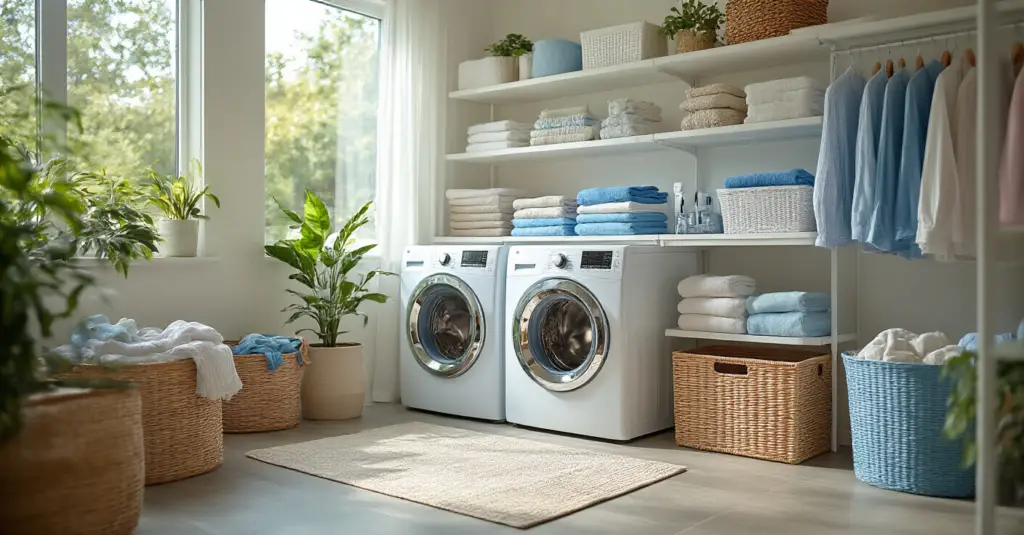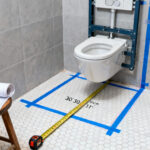You know what people always ask me? “Piper, how is your house so clean with all your animals?” They picture my home as a vortex of fur, muddy paw prints, and general chaos. And, some days, it is! But the secret isn’t some magic wand or a life without shedding. It’s about getting brutally smart with laundry.
The truth is, for those of us whose family members have four paws and a tail, laundry isn’t just about clothes. It’s about managing an entire ecosystem of bedding, towels, toys, and the occasional “accident” blanket. Forget the generic advice you find online. That’s for people who don’t have to de-fur a black sweater before a meeting or figure out how to wash a dog bed that smells like, well, dog. What actually matters is creating a system that works for your real life—the one filled with belly rubs and dirty paws. Let’s cut through the noise and talk about how to really get this done.
Foundational Steps for Smarter Laundry Planning
Before you buy a single cute basket, we have to lay the groundwork. This is the unglamorous part that makes all the stylish, easy stuff possible. Think of it as house-training your chore routine.
1. Conduct a ‘Laundry Zone’ Declutter for Instant Clarity
Okay, let’s be honest. Your laundry room (or closet, or corner) is probably a graveyard for things you thought were a good idea. That half-used bottle of “calming” pet shampoo that did nothing? The three ratty towels you reserve for only the muddiest emergencies? The single sock that’s been there since your puppy was… well, a puppy? It all has to go. You cannot organize clutter. It’s like trying to put a collar on a ghost—pointless and frustrating.
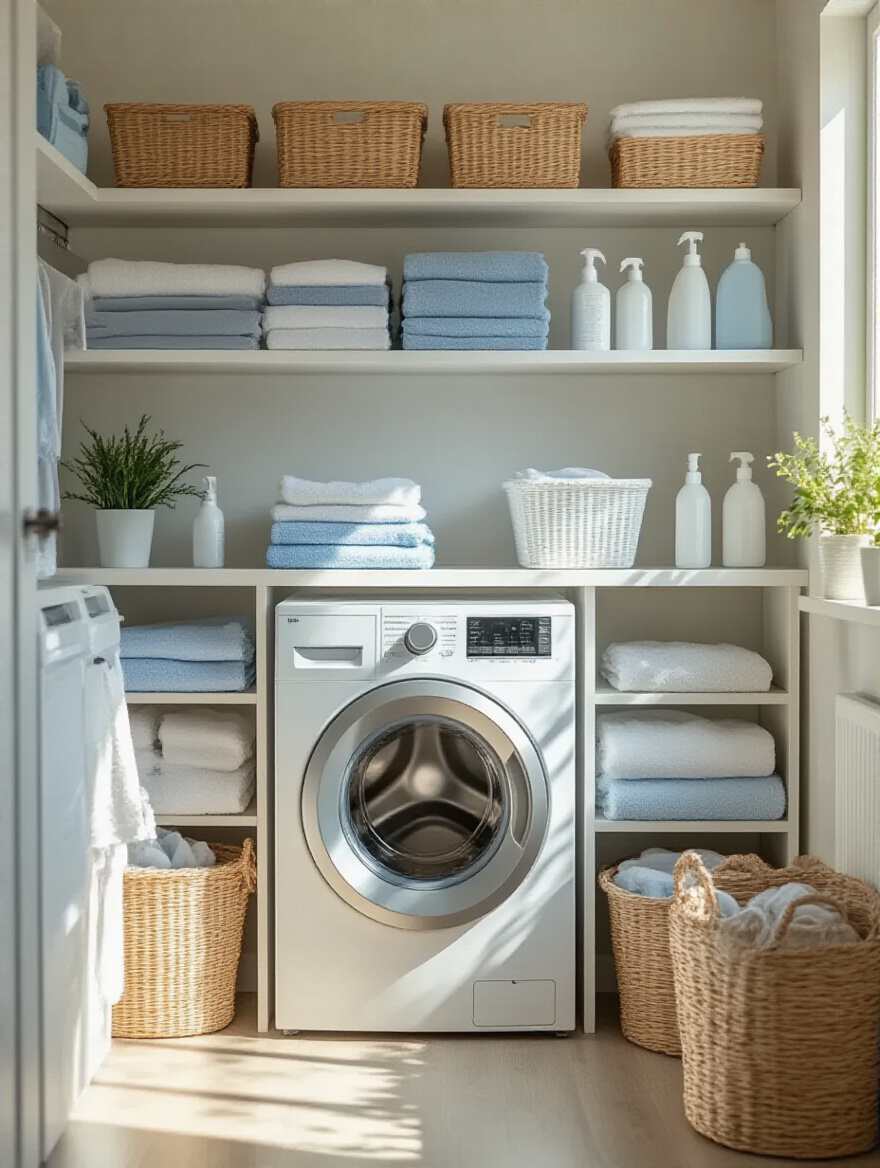
Start by pulling everything out. Every single thing. Make piles: Keep, Toss, and a “Does This Even Belong Here?” pile (because we all have one). Be ruthless. If that stain remover didn’t work on the mystery smudge two months ago, it’s not going to work now. Toss expired products, donate old linens to an animal shelter (they’ll be thrilled!), and get rid of anything that isn’t actively serving your laundry mission. Cleaning the space after it’s empty feels like a fresh start for you and your pets.
Once your space is clear, you can finally see what you’re working with, which is the only way to build a system that won’t collapse into chaos in a week.
2. Designate a Clear Sorting System for Optimal Efficiency
The biggest time-suck on laundry day isn’t the washing; it’s the sorting. Digging through a mountain of mixed-up clothes to find enough whites for a load is a special kind of purgatory. The solution is to sort as you go, and for pet people, this is non-negotiable. Your sorting system is your first line of defense against the unique messes our fur-kids create. Forget just “Lights” and “Darks.” You need more specific categories.
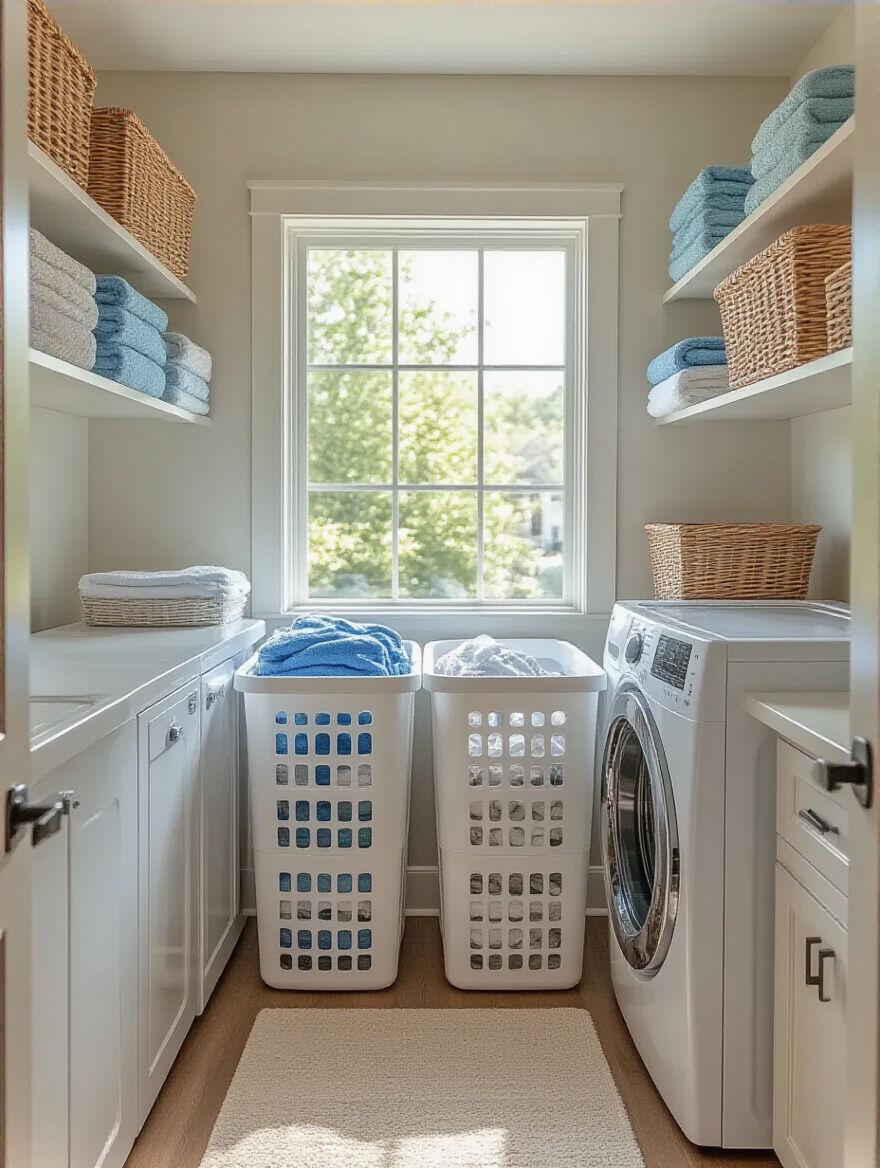
Your new life-saving categories should look something like this: Human Clothes (Lights/Darks), Household Linens (sheets/bath towels), and the all-important “Pet Stuff” bin. This last one is for their bedding, their muddy-paw towels, and any blankets they’ve claimed as their own. You should always wash pet items separately to control fur and dander, and heavily soiled items (hello, post-dog-park towels) should get their own dedicated load so that grime doesn’t end up on your pillowcases. Use a multi-bin hamper and label it clearly. It takes two seconds to drop a shirt in the right bin, and it saves you 20 minutes of sorting later.
Think of it as setting your future self up for success, giving them the gift of time they can spend playing fetch instead of digging through dirty clothes.
3. Evaluate Your Family’s Laundry Habits for Tailored Solutions
A system that works for a single person with a chihuahua will not work for a family with two kids and a Golden Retriever who thinks he’s a swamp monster. You have to get real about the kind of laundry your household actually produces. For one week, be a detective. Who is the mess-maker? (It’s okay, we know it’s probably the dog.) How many towels do you use drying off wet paws? How often does the cat’s favorite fleece blanket really need a wash to de-fur it?
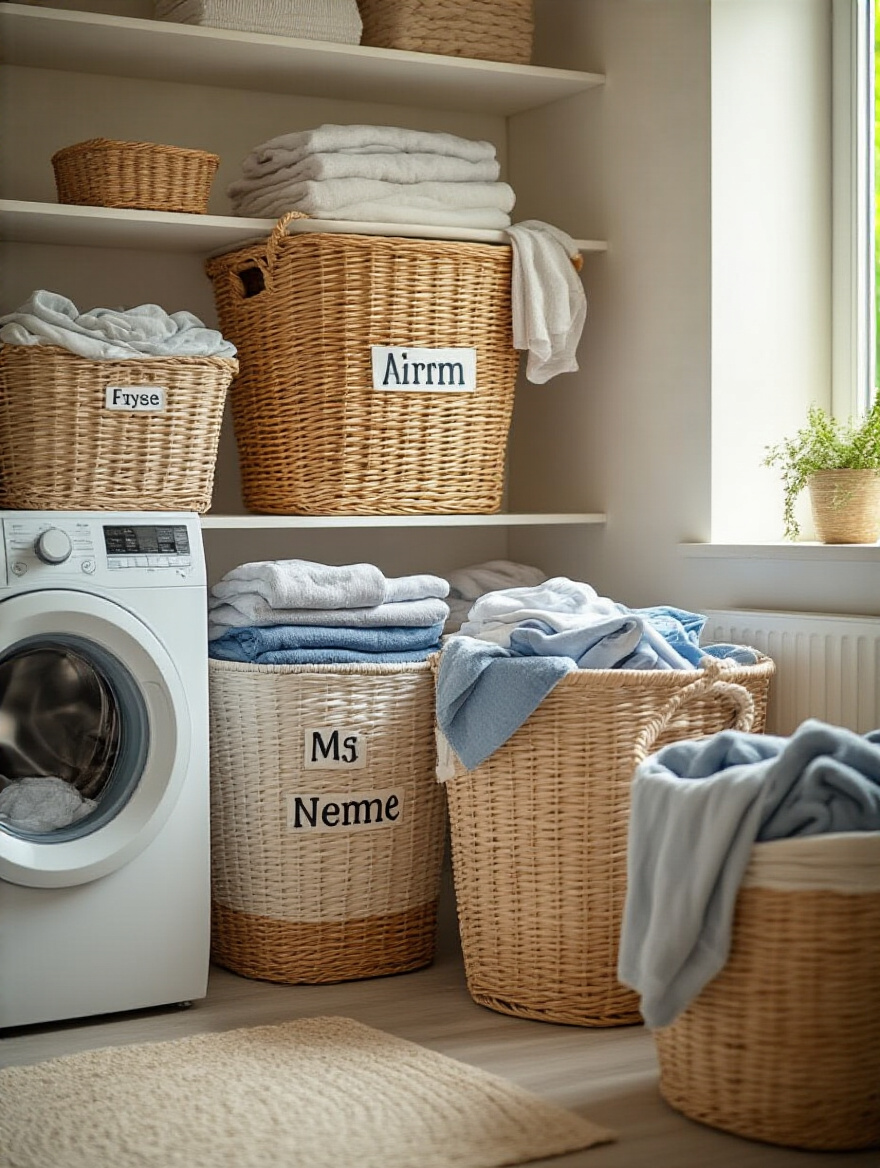
This audit isn’t about judgment; it’s about data. I once had a client who was constantly overwhelmed by laundry. We did an audit and realized her dog’s bedding was the main culprit—it was huge, hard to wash, and needed cleaning twice a week. We swapped it for a bed with a zip-off, washable cover and two extra covers on rotation. It completely changed her laundry game. Your system has to be built around the life you actually live, not the one you see in magazines.
After you’ve spied on your family (furry members included), you’ll know exactly where the bottlenecks are and can build a smart, targeted plan.
4. Create a Dedicated Laundry Day Schedule to Stay on Track
I know, “laundry schedule” sounds horribly restrictive, but hear me out. It’s not about being a drill sergeant; it’s about creating a rhythm so the laundry monster never grows big enough to be scary. Instead of letting everything pile up for a marathon 8-hour session on Sunday, break it up. Maybe Tuesday is for human clothes, Thursday is for sheets and towels, and Saturday morning is reserved for all the pet stuff.

Scheduling a dedicated “Pet Bedding Day” is a vet-tech-approved trick. Regularly washing their bedding, soft toys, and blankets in hot water with a pet-safe detergent helps manage allergens, kills dust mites, and keeps bacteria and funky smells from taking over your house. A consistent schedule means your home stays healthier and fresher for everyone, and it prevents you from having that “Oh no, the dog bed is disgusting and we have guests coming over” panic. Set a recurring reminder on your phone—done.
With a simple schedule, laundry becomes a predictable, manageable task instead of a chaotic, all-consuming weekend-wrecker.
5. Inventory Essential Supplies Before Starting Your Revamp
Before you get seduced by all the pretty organizing bins at The Container Store, you need to know what you actually need. Pull out every detergent, stain remover, and fabric softener you own. Be honest: do you use it? Is it pet-safe? A confession: early in my design career, before I fully merged it with my vet tech brain, I bought a beautifully packaged, fancy-smelling detergent. Turns out, it was full of essential oils that are a huge no-no for cats. I’d been washing their favorite blankets in it for weeks! Luckily, no one got sick, but it was a wake-up call.
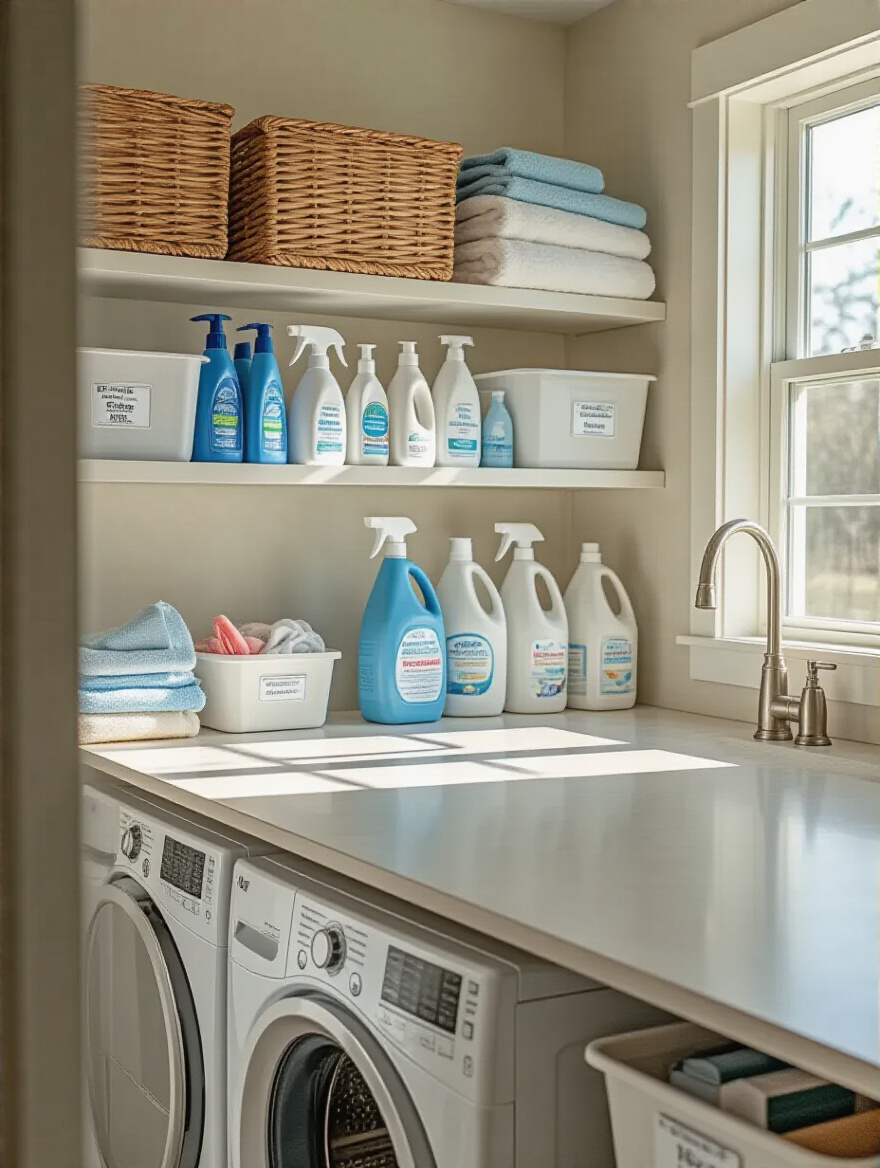
Your inventory should have two goals: decluttering what you don’t need and making a list of what you do. Your must-haves for a pet-friendly laundry room are a high-quality, fragrance-free, pet-safe detergent; a good enzyme cleaner (like Nature’s Miracle) for organic stains like urine or vomit; and a mega-pack of lint rollers or a clothes shaver. Get rid of the rest. Starting fresh with only the essentials makes staying organized infinitely easier.
Now that you have a plan and know what you need, we can start putting your laundry room back together in a way that actually makes sense.
Optimizing Your Physical Laundry Space
Okay, planning is done. Now for the fun part: making your space a joy to work in. Even if your “laundry room” is a tiny closet, you can turn it into a powerhouse of efficiency that’s also safe for curious noses and paws.
6. Maximize Vertical Storage with Stackable Shelving Units
Most laundry rooms have one thing in common: wasted vertical space. The area above your washer and dryer is prime real estate! Installing simple shelving is the single most effective way to get everything up off the floor and out of reach of curious pets. Heavy bottles of detergent, boxes of dryer sheets, and containers of cleaning chemicals should never, ever be left on the floor or on top of the dryer where a cat can knock them over.
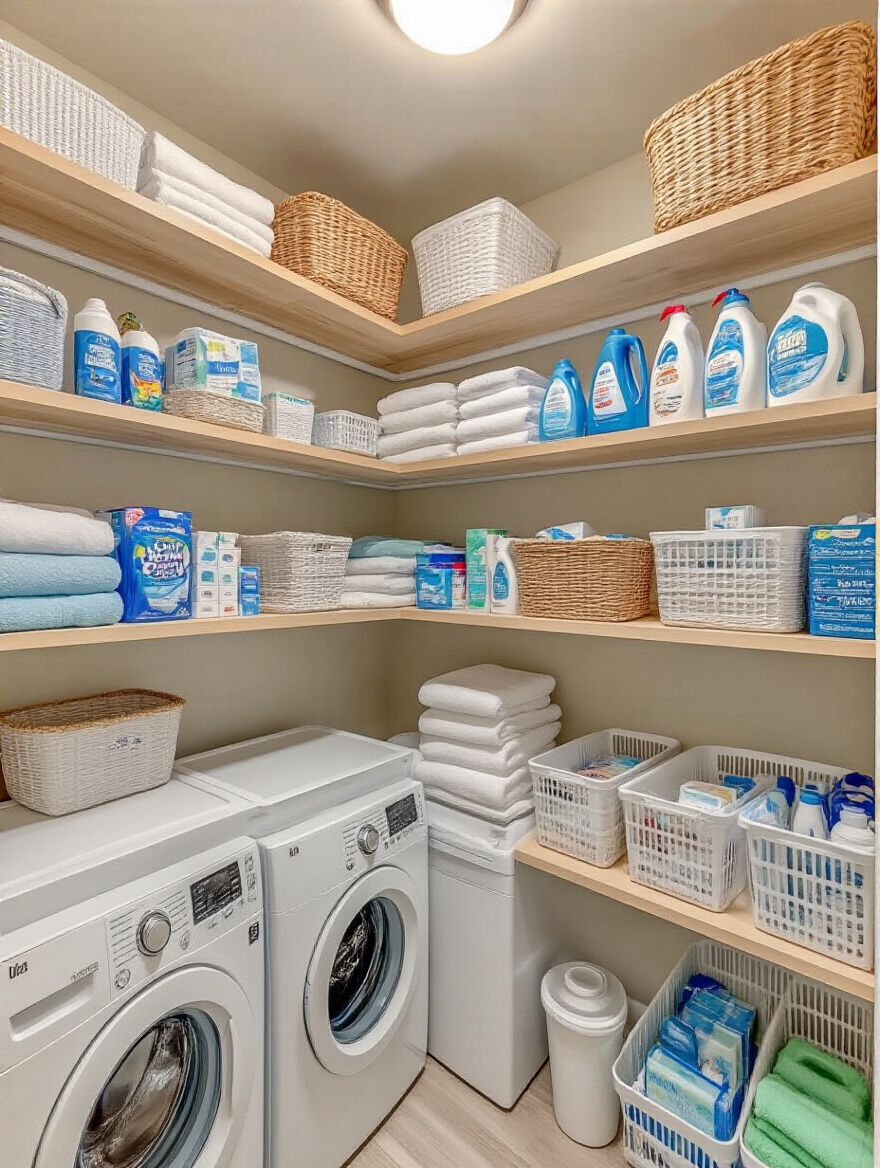
Go for sturdy, moisture-resistant shelves. Wire shelving is great because it doesn’t collect dust and you can easily see what you have. Put your heavy, everyday items like detergent on the lowest shelf you can comfortably reach. Lighter, less-used items can go higher up. This isn’t just about tidiness; it’s a critical safety measure. You create a clear, functional workspace for you and a safer environment for your animals.
With everything off the floor and in its place, your small space will suddenly feel twice as big and ten times more functional.
7. Utilize Wall-Mounted Solutions for Drying Racks and Boards
Bulky drying racks are the worst. They take up the entire floor, you trip over them, and your dog probably thinks it’s a fun new cave to explore, knocking all your wet delicates onto the floor. The solution is to get it off the floor and onto the wall. A wall-mounted, fold-down drying rack is a game-changer, especially in a small space. It’s there when you need it and practically invisible when you don’t.
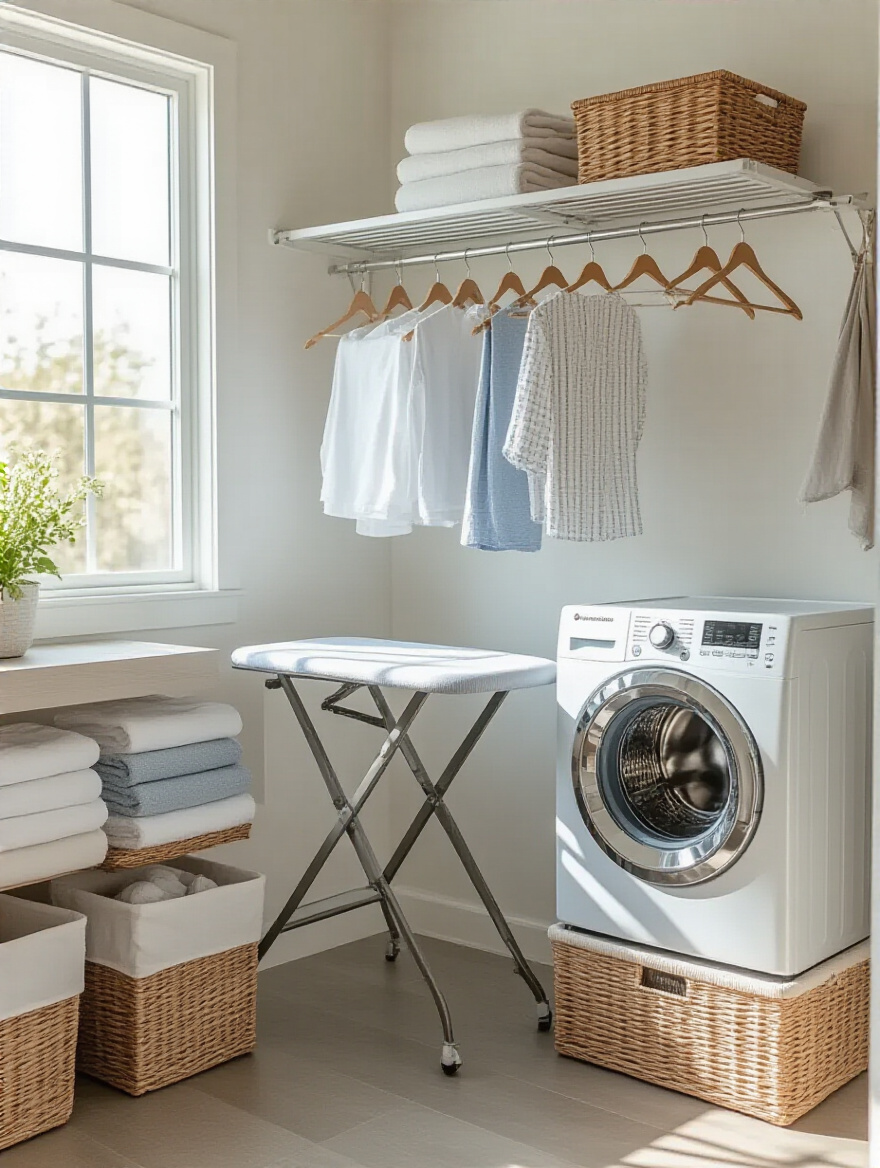
These are perfect for air-drying those special items you don’t want to shrink, like a favorite wool sweater or your dog’s hand-knitted holiday jumper (don’t judge). The same goes for ironing boards. A clunky, freestanding ironing board is a tipping hazard waiting to happen. A wall-mounted, fold-down version is secure, stable, and completely out of the way, leaving the floor clear for important things, like afternoon zoomies.
Freeing up your floor space is a huge win for both style and pet-friendly function, making the room feel less like an obstacle course.
8. Install Under-Sink Organizers for Chemical Safety and Access
The cabinet under the utility sink is often a terrifying black hole of forgotten bottles and damp sponges. It’s also one of the most dangerous spots in the house for pets. Bleach, harsh cleaners, and even some “natural” solutions can be incredibly toxic if licked or ingested. This is where my inner vet tech gets really loud: you must secure this area. Organizing it is the first step.
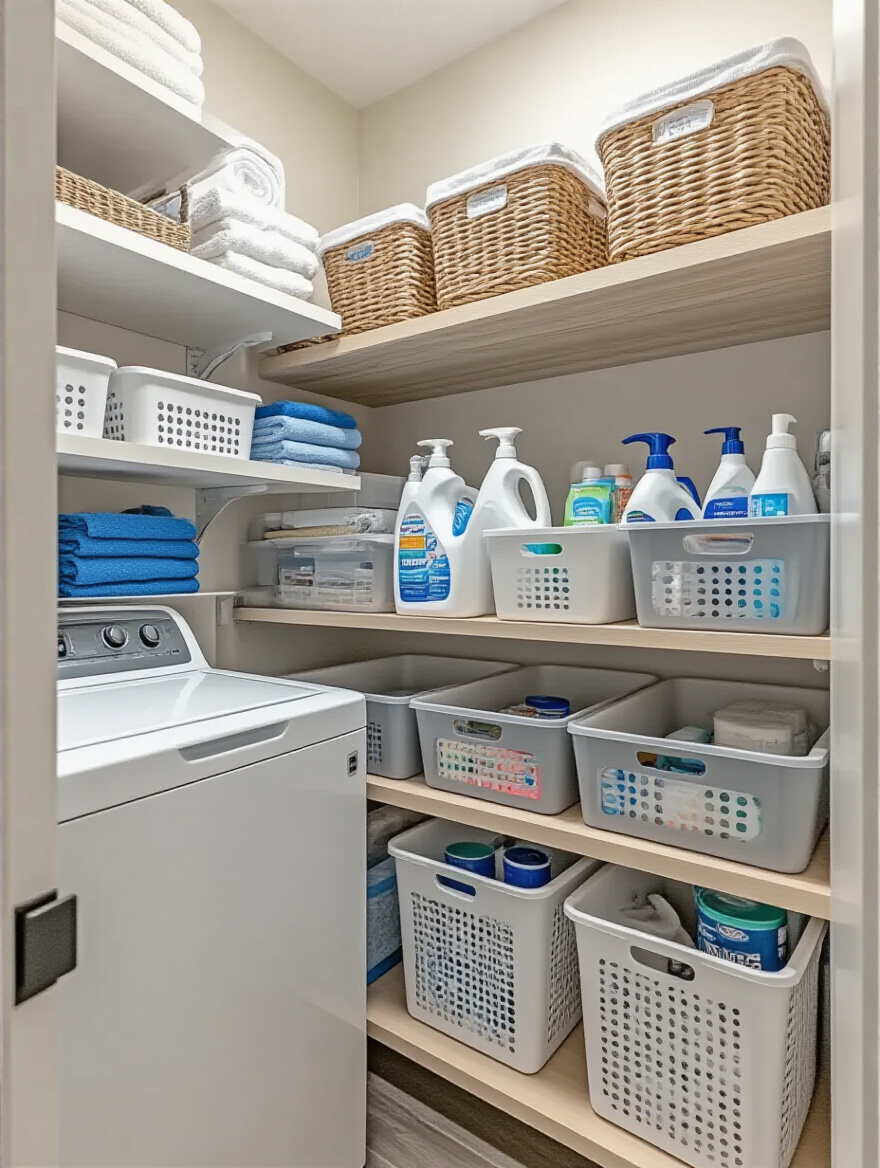
Install a simple pull-out drawer or a two-tiered organizer to make everything visible and accessible. No more blindly reaching into the dark abyss for the stain remover. Then, and this is the most important part, install a childproof (and therefore pet-proof) lock on the cabinet door. I don’t care if your pet has never shown interest before; it only takes one time. This simple, $5 fix gives you peace of mind and keeps your best friend safe.
“A safe home is a stylish home. Never, ever compromise on your pet’s safety for the sake of convenience.”
With your chemicals organized and safely locked away, you can breathe easier and move on to the smaller things.
9. Implement Clear Bins for Visual Sorting of Smaller Items
My brain just works better when I can see what I have. No more shaking opaque boxes to guess how many dryer balls are left. Clear bins are your best friends for taming the small stuff. And for pet parents, the “small stuff” category is endless! You can create a whole system that makes life so much easier.
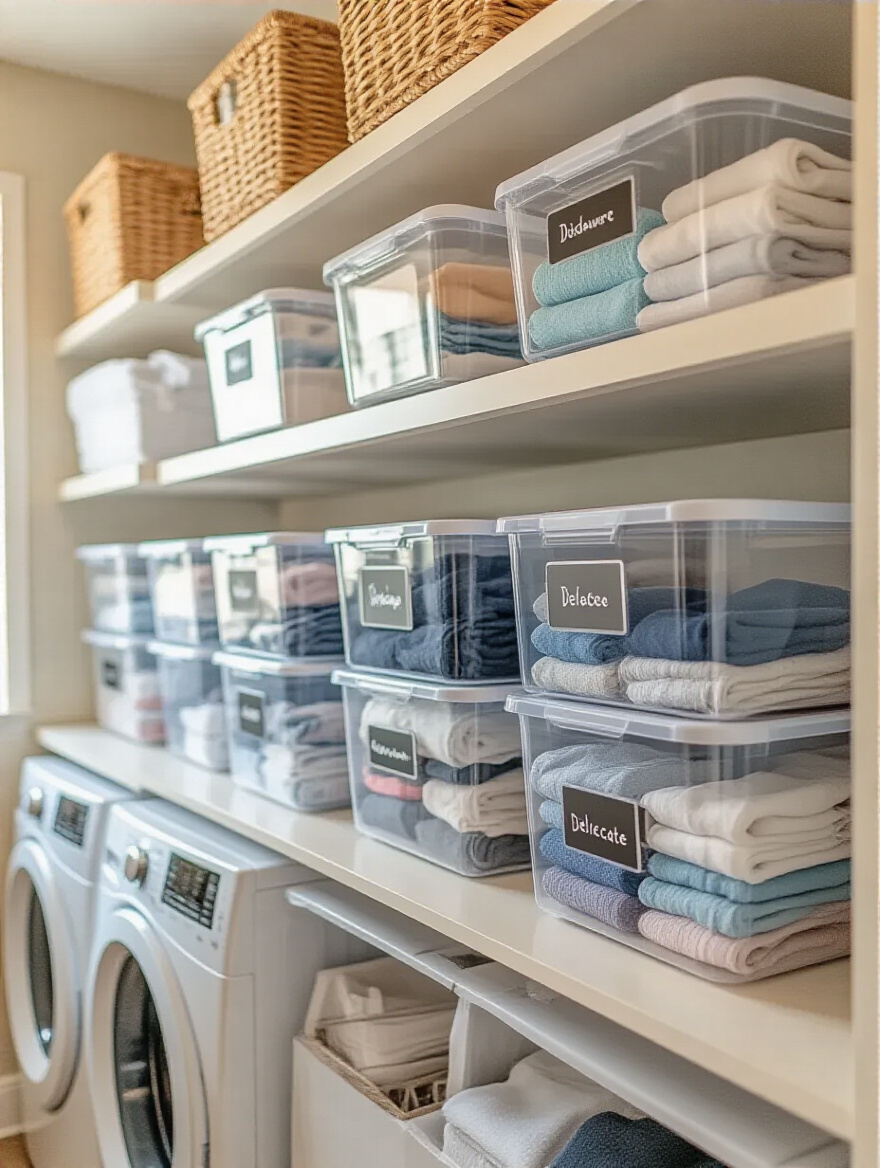
Designate clear, labeled bins for things like: “Clean Pet Toys,” “Grooming Supplies,” “Flea & Tick Meds,” and “Booties & Coats.” When it’s time for a walk, you grab the “Outdoor Gear” bin instead of hunting for a leash for ten minutes. It’s also brilliant for pet toy rotation—keeping some toys hidden away in a “Toy Library” bin makes them feel new and exciting when you swap them out. This little trick keeps your pet engaged and your floors less cluttered.
Visual storage saves you time and mental energy, and let’s be honest, it looks incredibly tidy and satisfying.
10. Add a Portable Cart for Convenient Supply Transportation
A rolling cart is one of my favorite secret weapons for a multi-story house or a home where the laundry room is in a far-flung corner like the basement. Instead of juggling armfuls of detergents, folded clothes, and a stray dog toy, you can create a mobile laundry station. Load it up with everything you need for the task at hand.
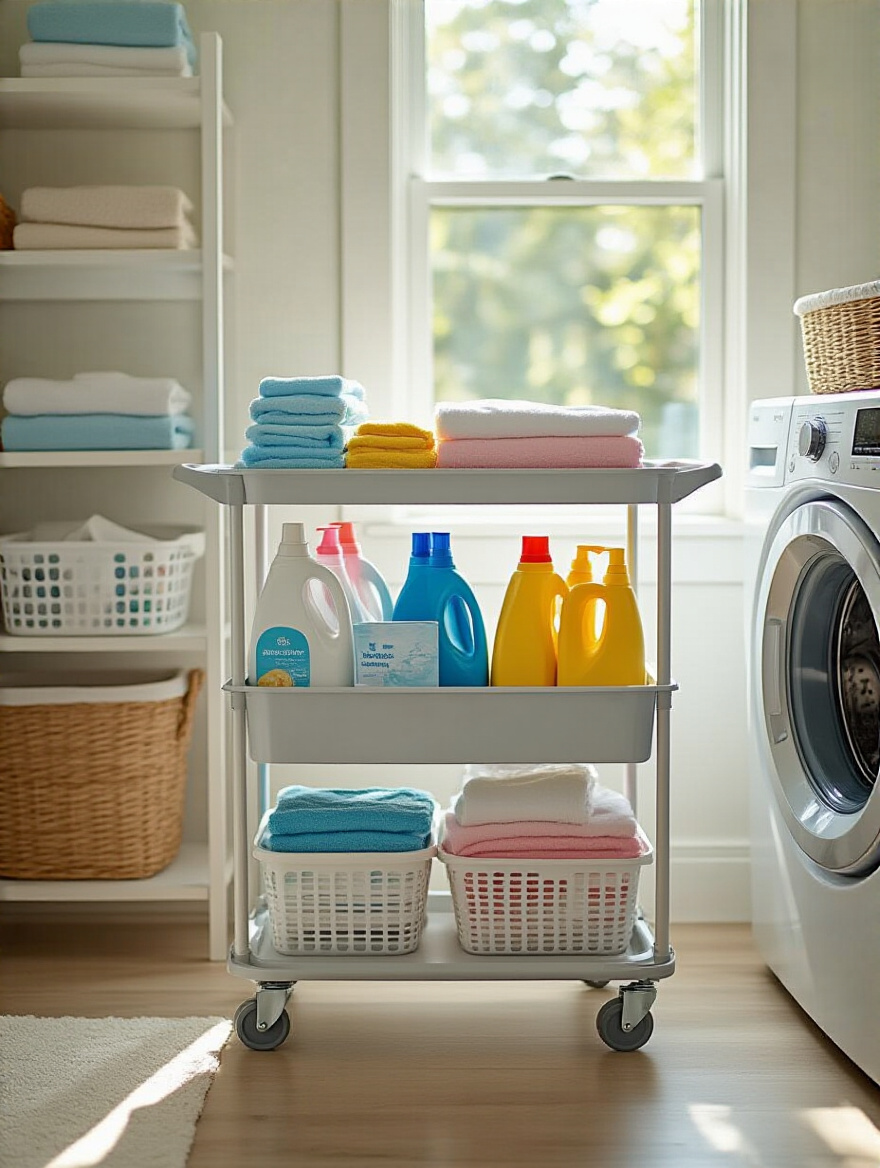
Better yet, make it a “pet care caddy.” Stock it with towels, enzyme cleaner, wipes, and a plastic bag for when your puppy has an accident on the living room rug. You can roll the entire clean-up kit to the scene of the crime in seconds. It’s also perfect for bath day—roll it into the bathroom with pet shampoo, towels, a brush, and treats. It stops the mad dash around the house for supplies while a wet dog shakes all over your furniture.
This little cart is about making your life easier, bringing the tools to the task instead of running back and forth a dozen times.
Streamlining Your Daily Laundry Workflow
You’ve organized your space and supplies. Now let’s tweak the actual process of doing laundry so it feels less like a chore and more like a smooth, efficient system.
11. Develop a ‘One-Touch’ Fold and Put Away System
The “laundry mountain”—that pile of clean clothes that lives on a chair or the foot of the bed—is the final boss of laundry. It sits there, mocking you, slowly getting covered in a fresh layer of pet fur. The way to defeat it is the “One-Touch” rule: as soon as a load comes out of the dryer, you handle it once. You fold it and put it directly away in the closet or drawer. No intermediate piles allowed.
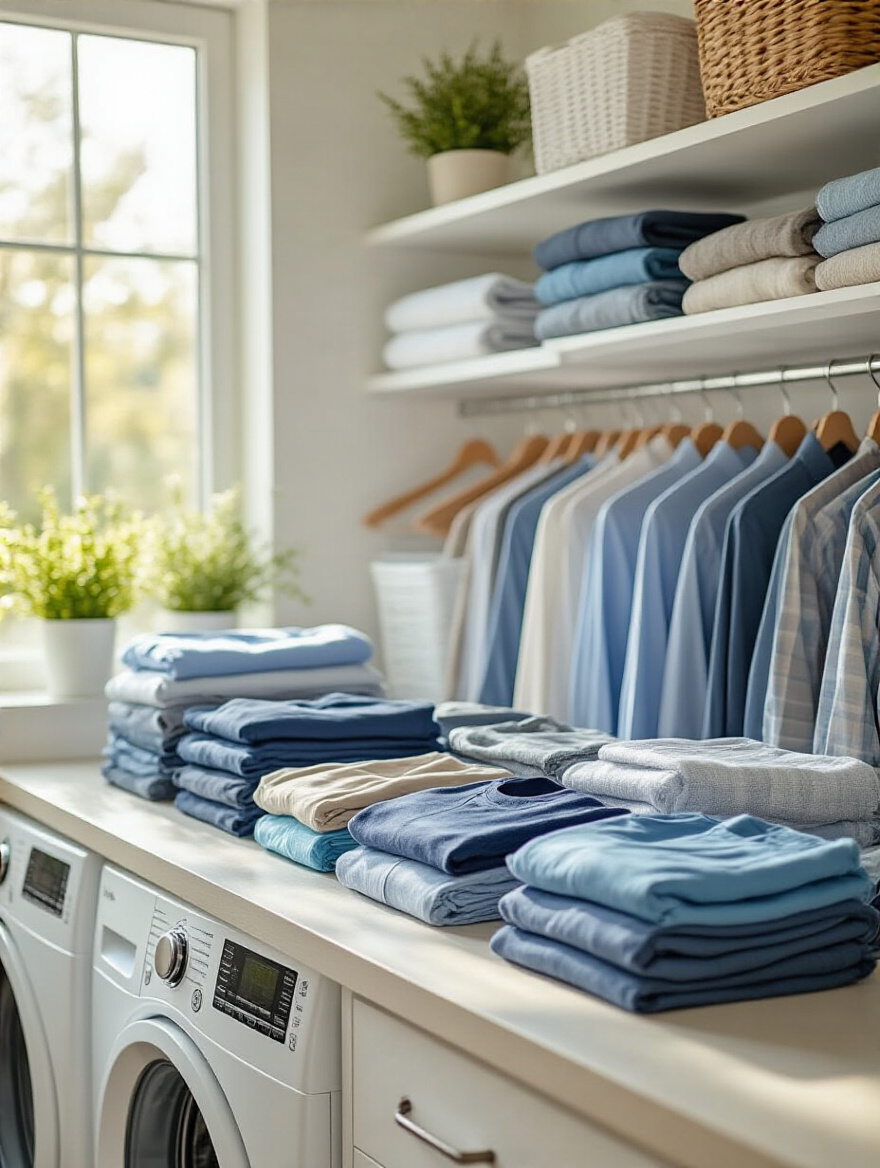
I know, I know. It’s so tempting to dump the warm basket of clothes on the bed and say “I’ll get to it later.” But “later” is how the mountain is born. To make it easier, commit to only doing loads you have time to finish completely. If you only have 20 minutes, maybe just do a small load of pet towels that can be folded and put away quickly. Folding on a high surface, like a counter over your front-loaders, also helps keep “helpers” of the four-legged variety from gleefully rolling in your clean shirts.
Conquering the laundry mountain gives you back your space and ends that cycle of wrinkled, fur-covered clean clothes.
12. Establish Pre-Soak Zones to Handle Stains Promptly
When you have pets, stains aren’t an “if,” they’re a “when.” Whether it’s a muddy paw print on a white duvet or a little vomit on the rug (it happens!), time is your enemy. The longer a stain sits, the more it becomes a permanent resident. That’s why you need a dedicated “Stain First-Aid Station” in your laundry room or under the kitchen sink.
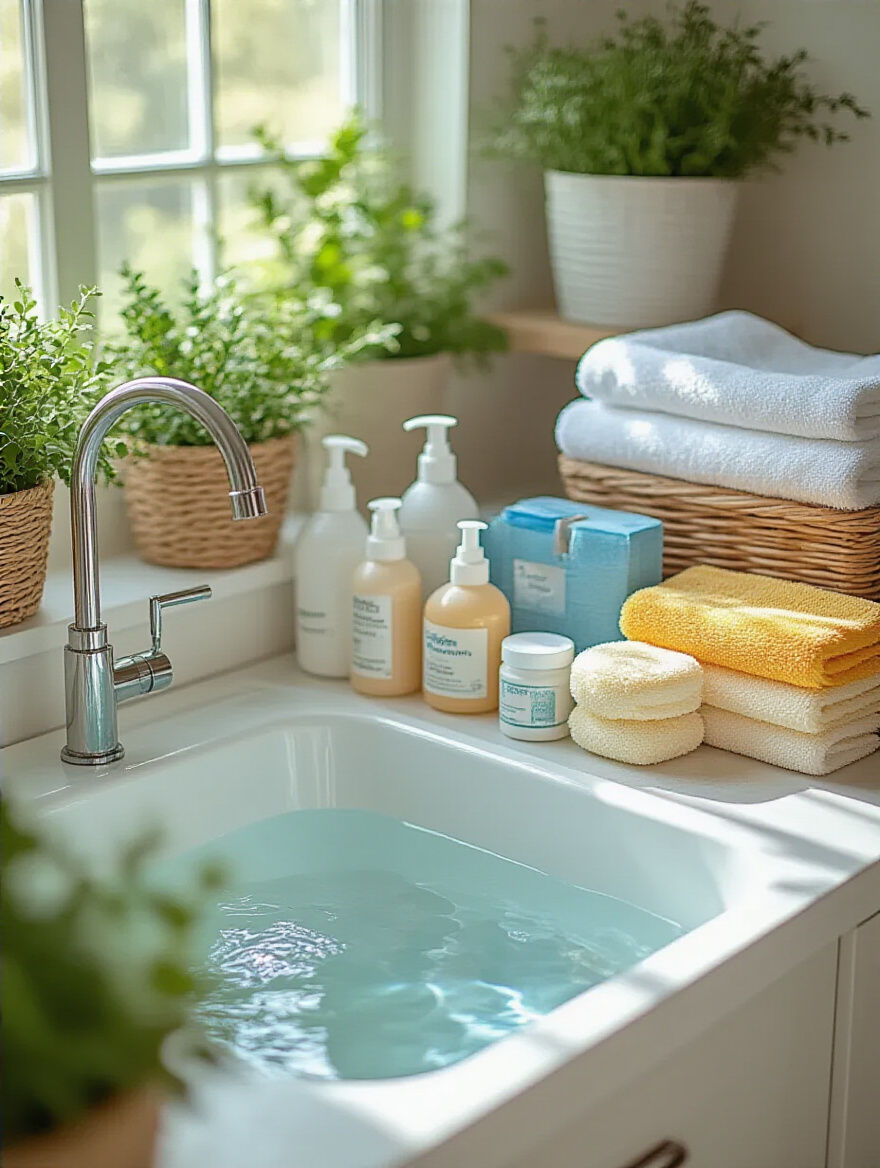
Your kit should include a great enzyme cleaner (this is critical for breaking down organic pet stains), a bottle of your favorite pre-treater, a small scrub brush, and some old rags. The rule is: the moment you spot a stain, you take the item directly to the station and treat it. A designated bucket for soaking heavily soiled items, like a blanket a sick puppy slept on, is also a must-have. This prevents you from just tossing it in the hamper where the stain will set and contaminate everything else.
Being prepared for stains makes them a minor annoyance instead of a full-blown laundry crisis.
13. Assign Designated Hampers for Easy Pre-Sorting by Load
We talked about sorting, but it’s so important I’m saying it again, but with more detail. A multi-bin hamper is your best friend. In my house, we have three bins in our main hamper: Whites, Colors, and a third one labeled “Delicates/Dry-Clean.” But the real hero is the separate, heavy-duty hamper we keep in the laundry room just for “Gross Dog Stuff.”
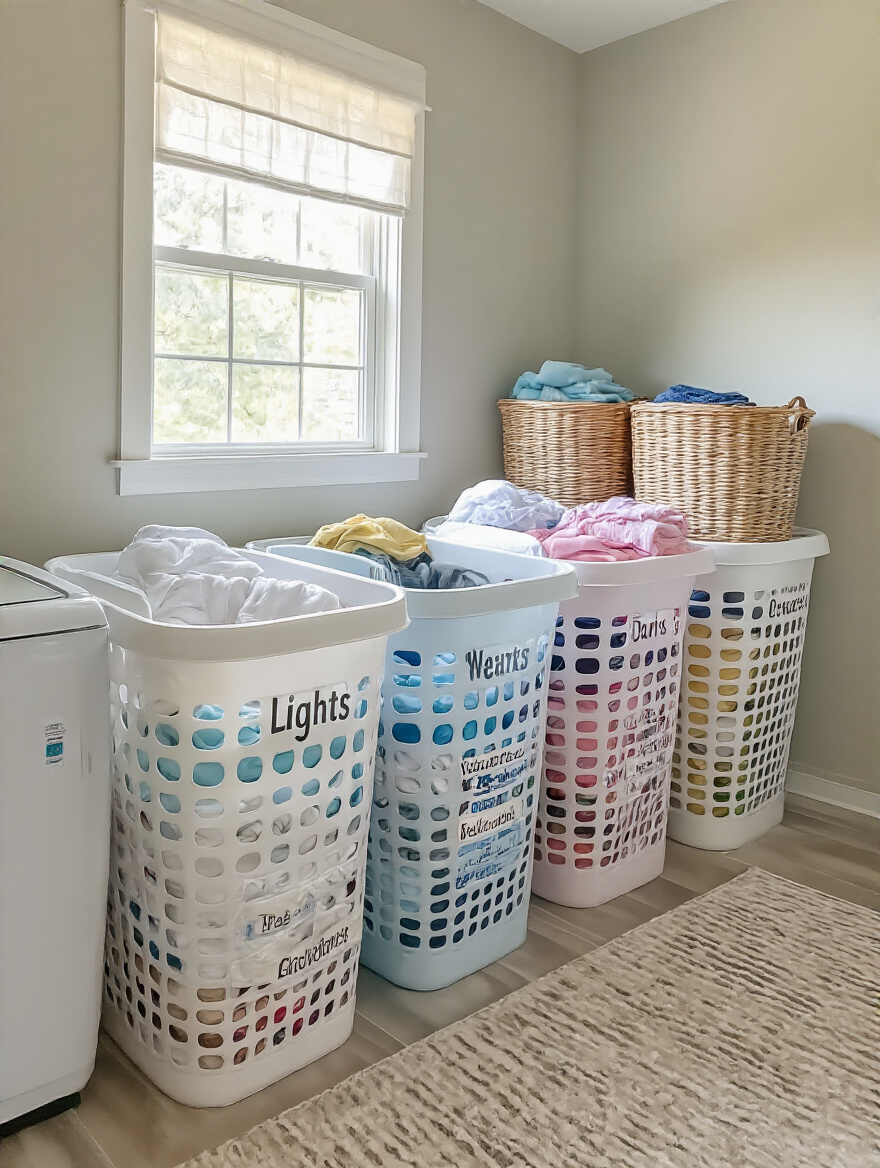
This is the bin for towels used after a rainy walk, bedding that’s seen better days, and anything that’s been in the line of fire during a bout of tummy trouble. Keeping these super-soiled items completely separate from your clothes is a huge sanity-saver and a major hygiene win. It means no cross-contamination and ensures those items get the heavy-duty, hot-water wash cycle they need without ruining your delicate blouses.
Seriously, if you adopt one habit from this entire list, let it be the “Gross Dog Stuff” hamper. It’s a revolution.
14. Color-Code Storage for Quick Identification of Cleaning Supplies
My brain loves visual shortcuts. When I’m in a hurry, I don’t want to read a bunch of labels. Color-coding your supplies is a quick and easy way to grab what you need in a split second. This can be as simple as putting a piece of colored electrical tape on the bottles or using colored bins.
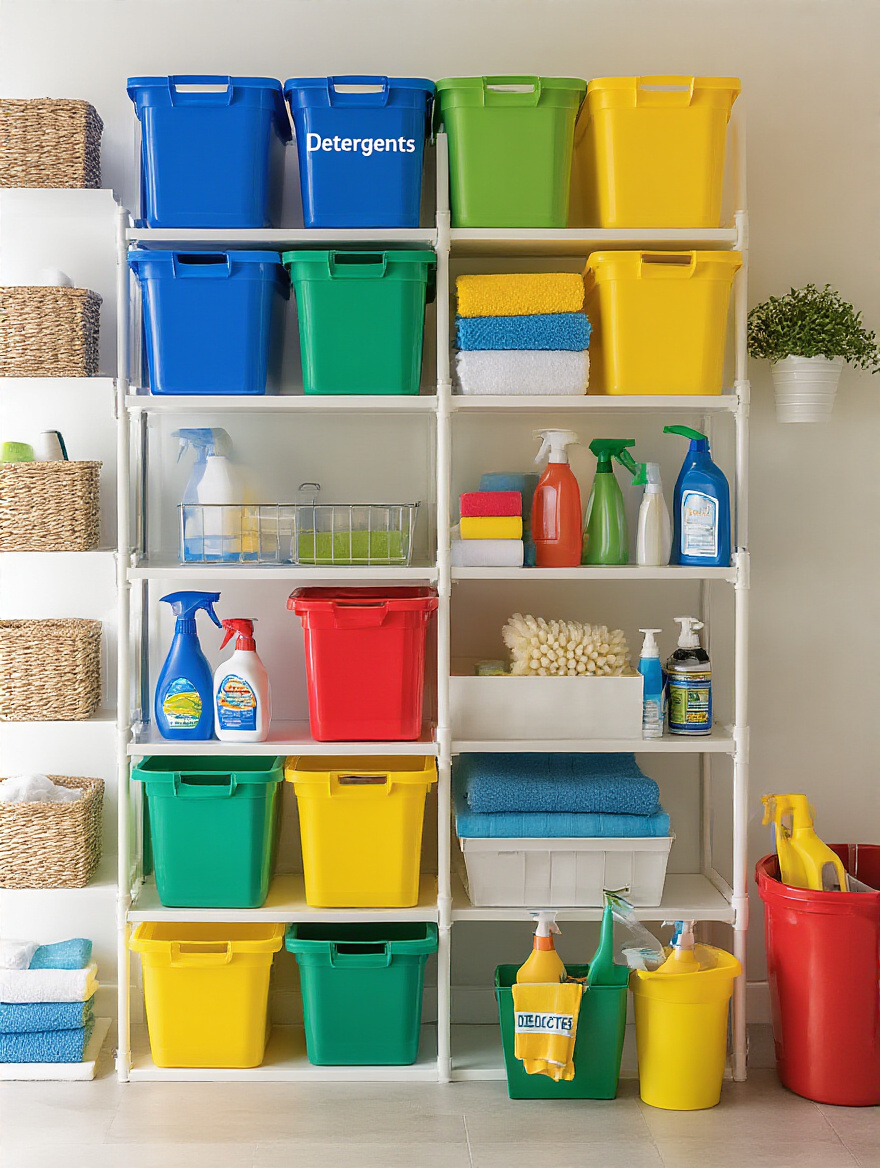
For example: Blue could be for all standard human laundry supplies. Green could be for your eco-friendly, pet-safe products. And red could be for the heavy-duty stuff, like bleach or serious chemical cleaners (which, remember, are stored safely away from pets!). It’s a simple system that reduces mental clutter. It’s also super helpful if you have other people in the house doing laundry—it’s much easier to say “Use the stuff in the green bin for the dog beds” than to explain which bottle is which.
This tiny tweak makes your whole system more intuitive and less prone to errors (like accidentally bleaching your favorite jeans).
15. Keep a ‘Lost & Found’ Bin for Rogue Socks and Belongings
The dryer is a well-known thief of socks. But in a pet household, it’s also where you find a random collection of other treasures. I’m talking about the coins, hair ties, and Chapstick that fall out of pockets, plus the half-chewed squeaker from a toy or a rogue kibble that somehow made it through a full wash cycle. Instead of letting this stuff clutter the top of your dryer, give it a home.
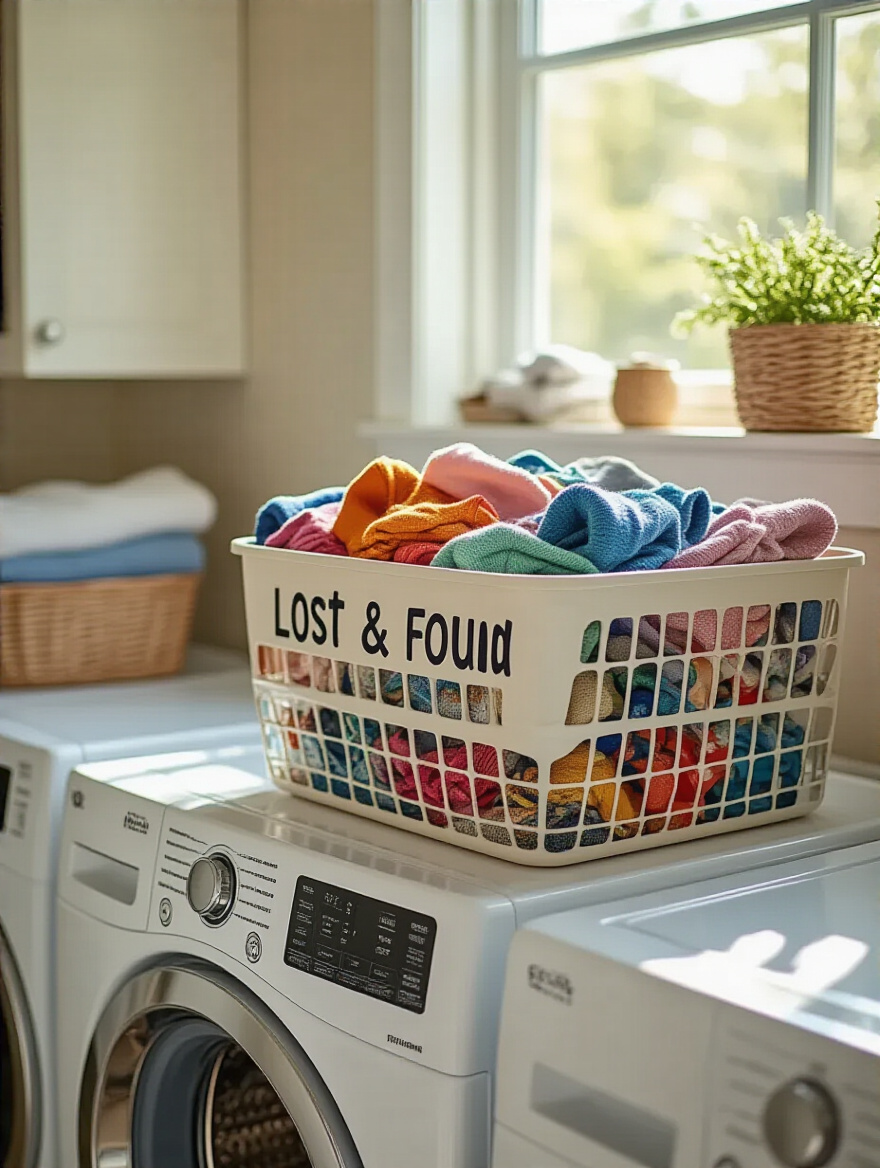
A small, designated “Lost & Found” bin is perfect for all these stray items. It’s the official waiting room for single socks looking for their mates. And it’s the place everyone in the house knows to look first when they’re missing something small. Once a month, you can sort through it, reunite the pairs, and toss the truly orphaned items. It’s a simple trick that instantly makes your laundry space look tidier.
Keeping these little rogues contained makes a surprisingly big difference to the overall sense of calm in your space.
Advanced Efficiency and Long-Term Laundry Maintenance
You’re in the home stretch! These final tips are about future-proofing your system, maintaining your clothes and machines, and making sure your new-found organization lasts for the long haul.
16. Create a Mending Kit Station for Quick Garment Repairs
The “to-be-mended” pile is a cousin of the laundry mountain—a guilt-inducing collection of clothes with a loose button or a small tear. Instead of letting them languish, create a small, dedicated mending station. It doesn’t have to be fancy. A simple shoebox or a clear container is perfect.
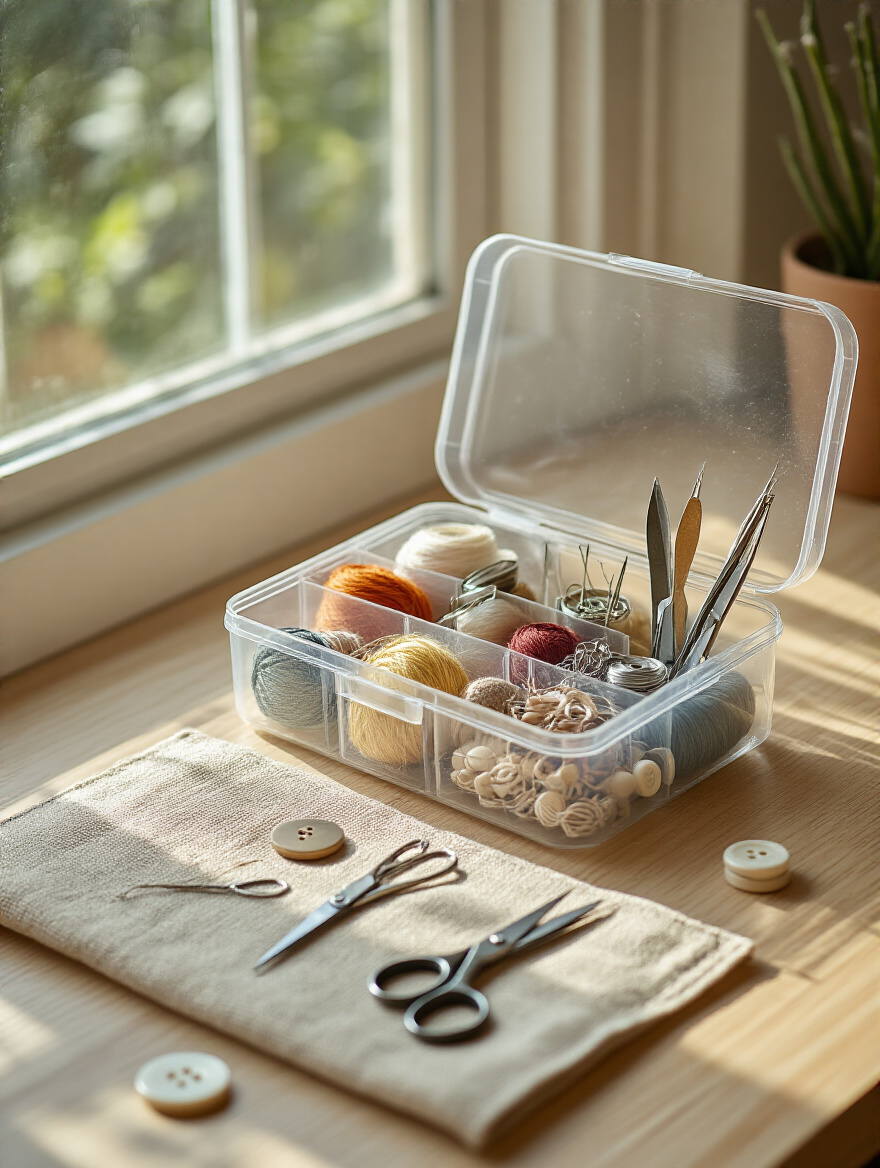
Stock it with the basics: a few needles, thread in neutral colors (black, white, grey), a couple of common button sizes, and small, sharp scissors. For pet owners, I’d add a seam ripper (for replacing a busted squeaker in a soft toy) and some heavy-duty thread for repairing a chewed-up corner of a dog bed. When you find an item that needs a quick fix, either do it right then or put it in the mending box. Giving it a designated home prevents it from getting lost back in the laundry cycle.
This proactive approach saves your favorite clothes, saves you money, and reduces waste. It’s a win-win-win.
17. Integrate a Dedicated Laundry Folding Surface for Ergonomics
Bending over your bed or a low coffee table to fold laundry is a recipe for back pain. And it’s prime territory for a cat to decide your warm, clean clothes are the perfect new napping spot. If you can, create a dedicated, counter-height folding surface. If you have front-loading machines, installing a countertop directly over them is a sleek and incredibly practical solution.

The surface should be at a comfortable height (around your hips) so you can stand with a straight back while you fold. It makes the task more comfortable, faster, and much more pleasant. And it keeps the laundry up and away from any furry “helpers.” If you don’t have space for a permanent counter, a sturdy, height-adjustable folding table that you can bring out on laundry day works just as well.
Your back will thank you, and your clothes will stay blissfully fur-free until they’re safely in the drawer.
18. Implement Machine Cleaning Schedules to Maintain Performance
This is the vet tech in me speaking again. You can’t have truly clean laundry if your machine is dirty. Washers, especially front-loaders, are the perfect breeding ground for mold, mildew, and bacteria, which can build up and create a funky biofilm. This residue, combined with trapped pet hair and dander, not only makes your clothes smell musty but can also irritate sensitive human and pet skin.
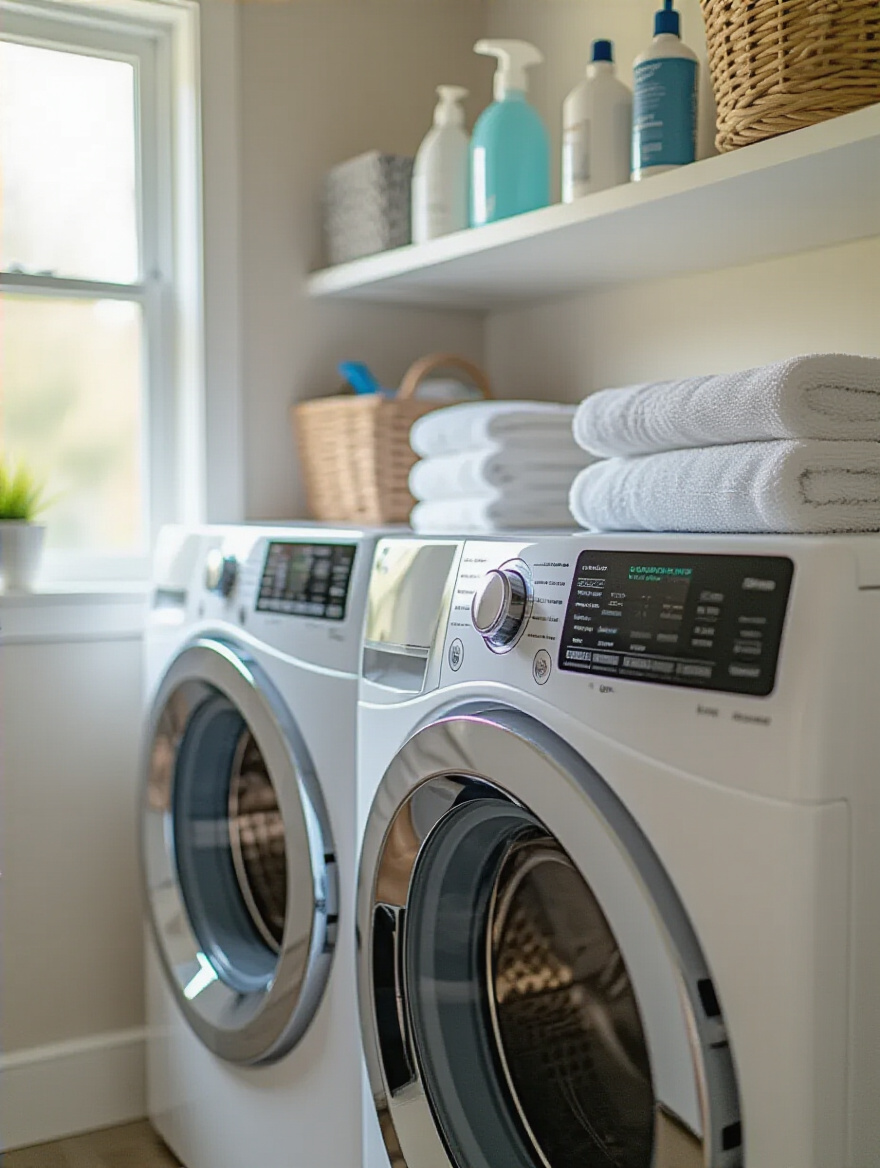
Once a month, run a cleaning cycle. You can use a commercial washer cleaner or run an empty hot cycle with a cup of white vinegar. After every wash, wipe down the rubber gasket on the door and leave the door ajar to let it dry out completely. And don’t forget the dryer! Clean the lint screen after every single load. A clogged lint screen is not only a massive fire hazard but also makes your dryer inefficient, costing you money. Think of this as a regular health check-up for the hardest-working appliances in your home.
A clean machine means cleaner, fresher clothes and a safer home for you and your furry family.
19. Automate Supply Reordering to Avoid Running Out
There is nothing worse than starting a load of muddy towels only to find you’re out of detergent. The final frontier of laundry organization is to automate your supplies so this never happens again. It’s the ultimate “set it and forget it” trick that frees up so much mental space.
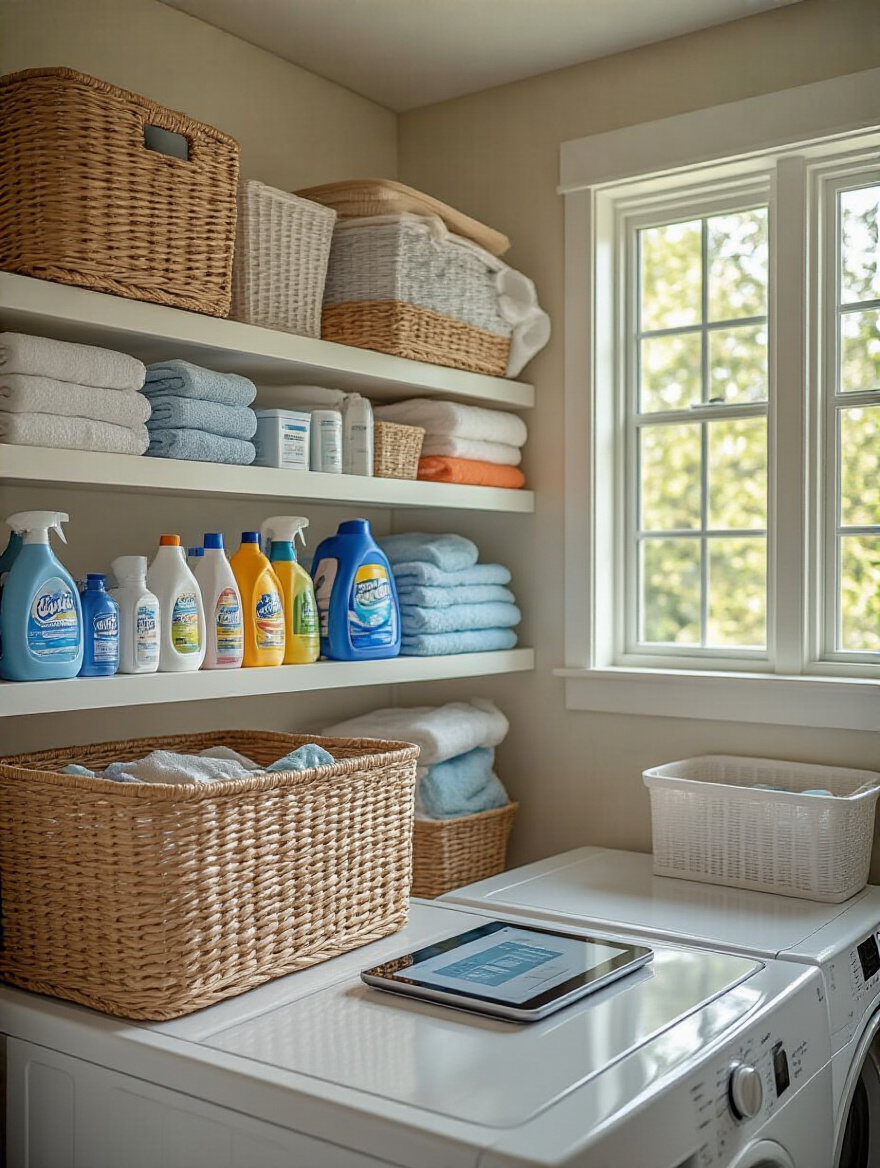
Services like Amazon’s Subscribe & Save are perfect for this. Figure out how quickly you go through your pet-safe detergent, enzyme cleaner, and any other essentials, and set up a recurring delivery. You’ll not only save a trip to the store but often get a discount. You can adjust the frequency anytime. The goal is to eliminate “running out of something” from your list of things to worry about.
Automating the boring stuff leaves you with more time and energy for the fun stuff, like extra-long walks and cuddles on the couch.
Your Home is Your Haven—For Everyone
Look, turning your laundry chaos into a calm, streamlined system is about so much more than just clean clothes. It’s about creating a home that functions beautifully for every member of your family—the ones with two legs and the ones with four. It’s about taking a chore that feels like a burden and transforming it into a simple, peaceful routine.
By building a system that honors your real life, complete with all the fur, mud, and happy messes, you reclaim your time and reduce your stress. You create a space that feels stylish, safe, and welcoming to all. So pick one or two of these tips and start today. The calm, organized, pet-friendly home of your dreams is totally within reach. Your future self—and your happy, clean pets—will thank you.
